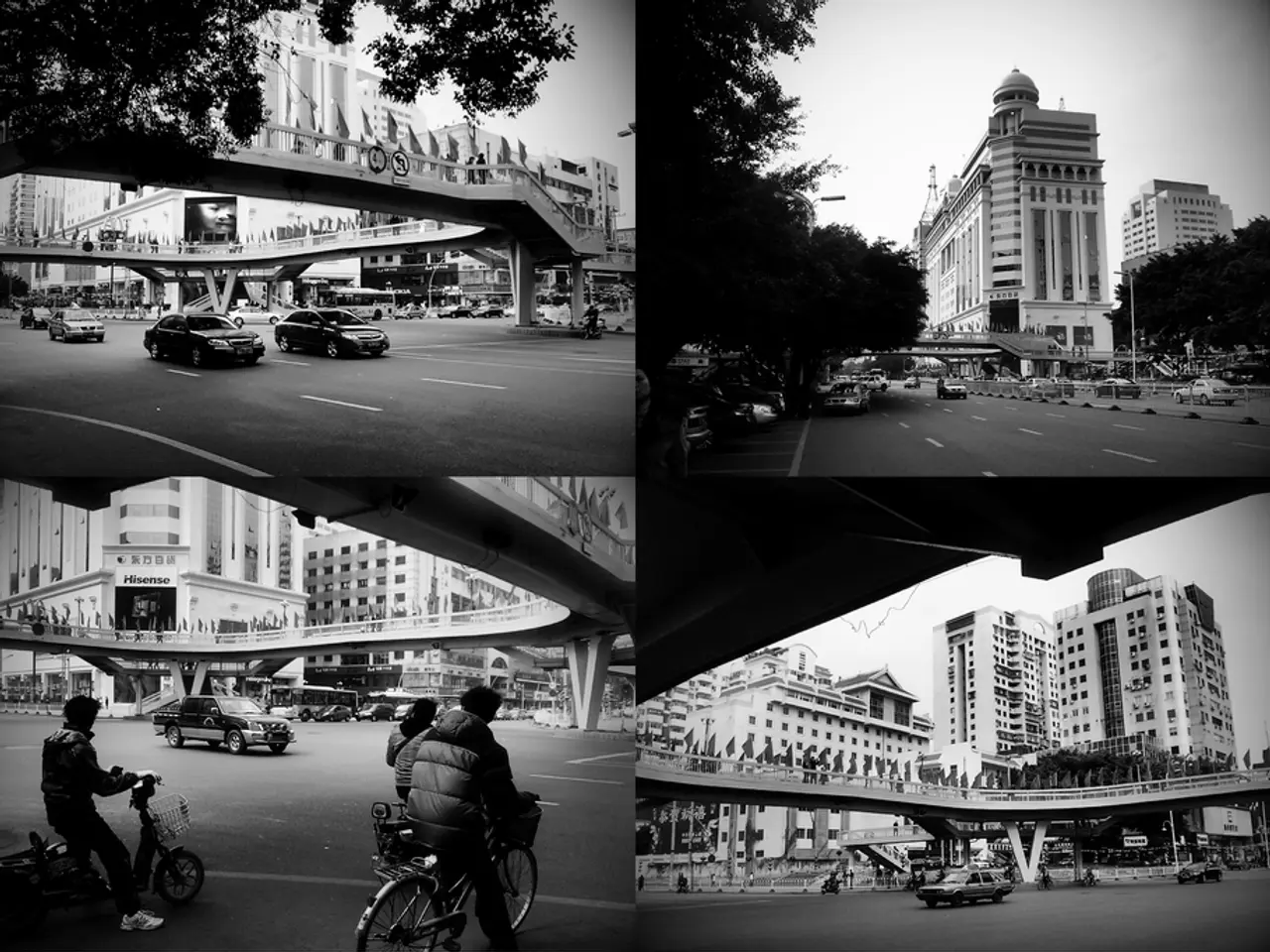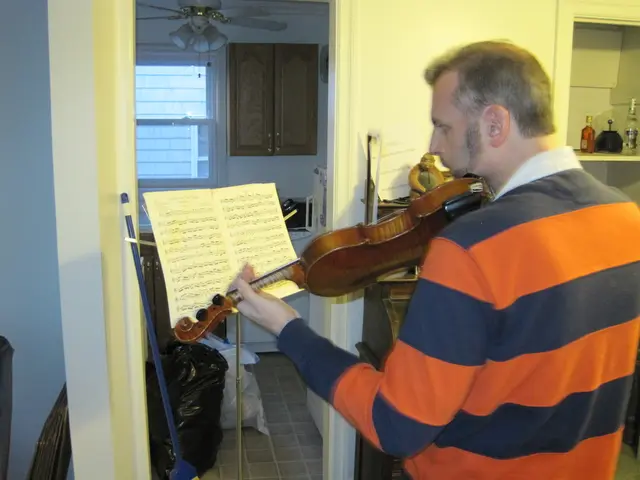Inauguration of Cycling and pedestrian Mori bridge takes place
Lübeck, a city steeped in medieval history and a UNESCO World Heritage Site, has recently seen the completion of a significant urban infrastructure project. The new Mori pedestrian and cycle bridge, located on the Fackenburger moat, marks a step forward in promoting eco-friendly and healthy commuting options.
The bridge, connecting the towns of Dornbreite and Stockelsdorf, was officially inaugurated after a seven-week construction period. It replaces a 3-field wooden beam bridge that had suffered significant damage over the years, securing the connection between Dürerstraße and Straße Am Landgraben.
The new bridge has been designed to meet today's requirements, including increasing the flow capacity of the moat. It features a single-span steel beam with a GFK surface, supported by two deep-founded steel-reinforced concrete beams for stability. The usable road width for cyclists and pedestrians on the new bridge has been increased to 2.50 meters, providing a safe and comfortable crossing.
Joanna Hagen, Senator for Building and Housing in Lübeck, emphasized the importance of smaller bridges like the Mori pedestrian and cycle bridge. Mayor Jan Lindenau expressed delight at the completion of the bridge, highlighting its contribution to the appreciation and experience of a historic site.
The bridge's design incorporates modern materials and elements while respecting Lübeck’s historical context. Lübeck is a city rich in medieval history, and renovations of infrastructure like pedestrian and cycle bridges often balance modern needs with preservation. These projects contribute to the continued livability and sustainable development of historically significant urban centers, maintaining the city’s cultural landscape while adapting to contemporary mobility demands.
The Fackenburger moat, part of Lübeck's history, was originally part of the medieval city wall that protected the surrounding area. Today, the moat stands as a historic monument and is considered a significant witness to the development of the city and the region. It was restored as a natural, open flowing waterway in 1998.
The new Mori pedestrian and cycle bridge not only serves as a functional connection but also contributes to the appreciation and experience of a historic site. Its modern design promises a significantly longer lifespan and lower maintenance than the old wooden bridge. This project is part of ongoing urban infrastructure improvements aimed at enhancing sustainable mobility options in Lübeck.
The Mori pedestrian and cycle bridge, with its modern design that blends contemporary materials and elements while respecting Lübeck's medieval history, not only strengthens the historic connection between Dornbreite and Stockelsdorf, but also provides an enhanced outdoor-living experience for cyclists and pedestrians through its increased usable road width. This sustainable and eco-friendly infrastructure project, reflecting the city's commitment to balanced home-and-garden growth, appreciates and preserves Lübeck's cultural landscape while catering to the demands of modern commuting.








